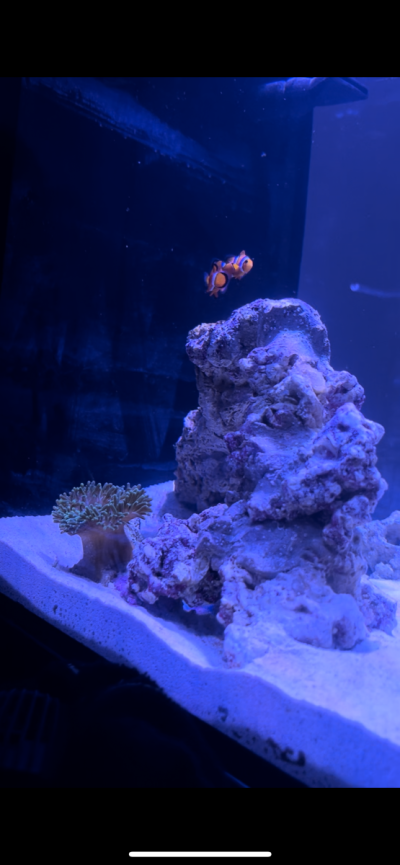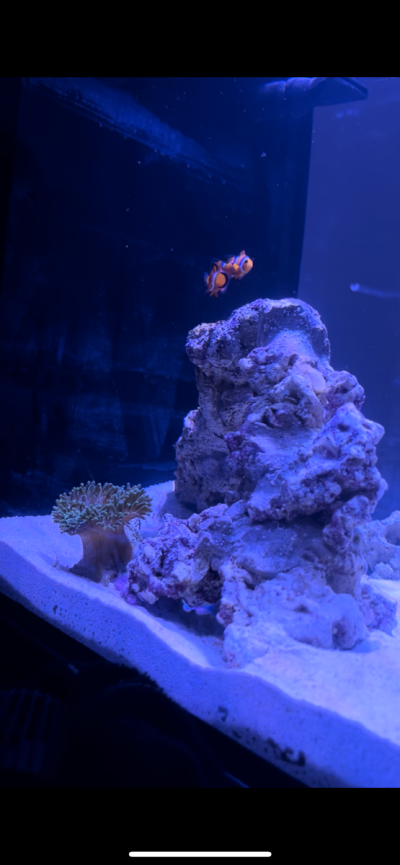Hi, so I just started my 15g AIO cube with a friends 8 year old sump live rock that’s got tons of bacteria on it and copapods. I was given as a gift 2 clowns and a green bubble top nem. Tank is only a week old with the 8 year old rock, bacteria filled sea water filled, and dr Tim’s was used as well for bacteria.
I acclimated the 2 clowns and the nem but I’m afraid I’ll end up killing it due to not having established parameters and ecosystem even with all that I have to help. The nem walked about 2 inches where I placed him and now he seems to have found his spot and seems to be enjoying itself. The clowns are ready paired with it so they’re also cleaning it. Any advice to try and make sure I don’t screw up with it? I’ve done a lot of research but it’s my first salt talk and I have no experience keeping coral or nems. Close friends have told me who have reef tanks there’s a high chance it’ll die and I’ll have to do a pretty large water change if that’s the case unless I catch it before bit I don’t even know what a healthy or stressed nem looks like. Any advice would be awesome.



I acclimated the 2 clowns and the nem but I’m afraid I’ll end up killing it due to not having established parameters and ecosystem even with all that I have to help. The nem walked about 2 inches where I placed him and now he seems to have found his spot and seems to be enjoying itself. The clowns are ready paired with it so they’re also cleaning it. Any advice to try and make sure I don’t screw up with it? I’ve done a lot of research but it’s my first salt talk and I have no experience keeping coral or nems. Close friends have told me who have reef tanks there’s a high chance it’ll die and I’ll have to do a pretty large water change if that’s the case unless I catch it before bit I don’t even know what a healthy or stressed nem looks like. Any advice would be awesome.




















